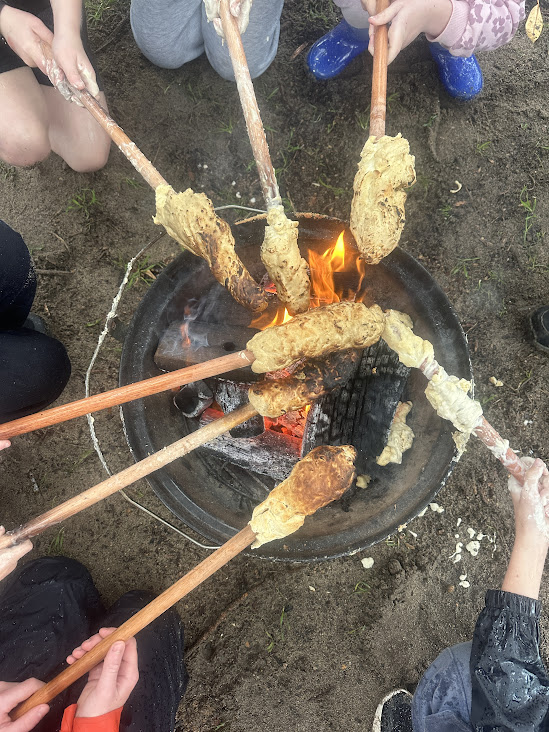As one term comes to an end and a new term begins, it is a time to reflect on the past and consider the opportunities ahead. On a personal level, being involved in our KIN homeschool program has been an incredibly rewarding experience. Meeting the same group of participants each week allowed strong relationships to form among the children and young people, as well as with the facilitators. It fostered a deep sense of community, encouraging connection with both people and the more-than-human world.
Community
One thing I noticed almost immediately was that many of the participants had pre-existing relationships, presumably formed through previous homeschool programs. Several siblings were also attending together, adding to the sense of familiarity. Despite this, new participants quickly ‘found their feet,’ forming friendships and engaging in new experiences and play opportunities. As the weeks progressed, there was a noticeable growth in the sense of belonging within the group, which I too felt part of.
This made me reflect on the term ‘community.’ On one hand, it refers to a geographical location, such as the beautiful Crawley foreshore along the banks of the Swan River, where we hold the program. This space offers an abundance of natural affordances, including water, sand, trees, and bushland. On the other hand, ‘community’ also represents a relational space that engenders social connections (Australian Government, 2016). During the program, attachments to both people and place were clear, supporting children’s wellbeing and resilience.


Culture
Community and culture are interrelated; both emerge through patterns of human relationships (Henricks, 2015). Historically, play has been central to the development of communities and the evolution of their cultures (Huizinga, 1970).
In Term 3, our typical play opportunities revolve around hanging hammocks and building cubbies; constructing and lighting fires; and the beach which offers opportunities for mastery play that involves manipulating and changing the physical environment.
In addition, several more situational play behaviours emerged. These included peg wars, where children clipped pegs onto the clothing of unsuspecting people; the simulation of animal characteristics, specifically cats and dogs; hanging out in hammocks, particularly among older children; and joke telling, mostly sparked by my tendency to share dad jokes. These activities almost became lore, part of the program’s subculture, as children and young people returned to the same play frames week after week and eagerly awaited my latest puns. It was fascinating to see how these spontaneous, light-hearted moments evolved into shared traditions that helped shape the group’s culture and strengthened social bonds.
The hearth
Another element that helped cultivate this sense of community and culture was the emphasis on cooking. The fire, or hearth, is a central gathering place for communal activity. Around the hearth, children and young people worked together to build the fire and cook food such as marshmallows, pasta, damper, and popcorn. Through these activities, they developed risk management skills such as fire safety and handling cooking tools. The hearth became a place where laughter, conversation, and collaboration emerged naturally. It created shared experiences and memories that contributed to the group’s culture.
Inclusivity
The diversity of participants’ characters was reflected in the wide range of play types, and it was striking how accepting the community was of different backgrounds, interests, needs, and desires. For example, some children engaged in imaginative animal play, dressing up with masks and tails and embodying the behaviours of their chosen creatures. Older children frequently engaged with younger children in the sand, sharing ideas, offering help, and collaborating on constructions. These playful expressions were welcomed and integrated into the group’s activities without judgment, building a strong sense of belonging and mutual respect.


Future directions
We are very much looking forward to welcoming our friends from KIN Homeschool back in 2026 to build on these experiences. For Term 4, 2025, we are providing several bespoke external programs for the cohort, and we will continue to nurture the positive connections we have made. By reflecting on what has worked well and remaining responsive to the children’s interests, we aim to strengthen relationships, encourage playful exploration, and deepen connections.
References
Australian Government. (2016). Community engagement: A key strategy for improving outcomes for Australian families. https://aifs.gov.au/cfca/publications/community-engagement/what-community
Henricks, T. (2015). Play and the human condition. University of Illinois Press.
Huizinga, J. (1970). Homo ludens: A study of the play element in culture. Granada Publishing.

